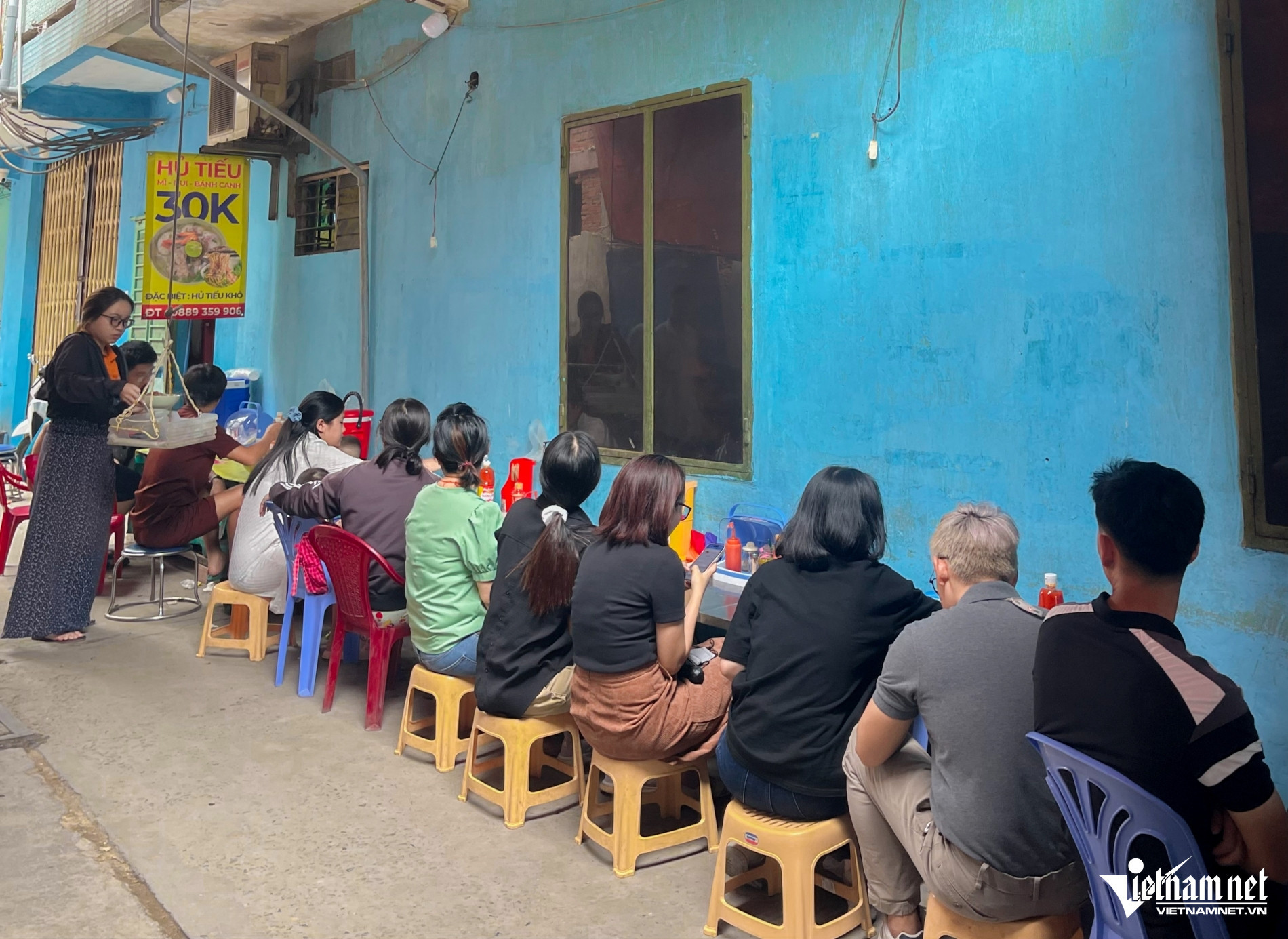
On a small alley at No 76A Tran Huu Trang Street in HCM City, the small shop selling hu tieu (rice noodle with seasoned and saute beef) has recently become famous for its unique service.
The shop has some plastics tables put against the wall. The signboard is very simple, with a few words ‘Hu tieu 30k’ (Hu tieu VND30,000).
The owner of the shop for four years is Nguyen Thanh Hong, mostly called by locals as Di Ba (Aunt Ba), 70 years old.
Asked why the shop is called ‘hu tieu tha day’ (hu tieu brought to diners by a rope), she said she has been selling hu tieu for 20 years. In the past, her hu tieu shop was located on the first floor, like many other eateries.
During the Covid-19 years, when people were asked to restrict gathering, she still prepared hu tieu and served local people. To strictly observe the regulation on contact limitations, she prepared hu tieu on the second floor and ‘deliver’ hu tieu to clients on the first floor. And the delivery method has been followed by Di Ba since then.
Di Ba has many plastic trays large enough to contain two bowls of hu tieu. She puts two pieces of thick towels on the tray and then put bowls of hu tieu on the towels. The tray is tied by a rope which drop hu tieu from the second floor to customers on the first floor.
When diners come to the shop, they need to speak loudly to inform Di Ba about their order. After that, when Di Ba drops trays with bowls of hu tieu, they need to receive the trays and take the bowls prepared for them.
The delivery and payment all are carried out with the assistance of trays. After eating hu tieu, customers put money on the trays to make payment. This is a original kind of ‘contactless transaction’ which cannot be found at any other eatery. The shop cleaning is undertaken by Di Ba’s son.
Di Ba said her clients are mostly acquaintances, local people, petty merchants, and shoppers at Tran Huu Trang Market.
It is surprising that diners don’t feel inconvenient about the service at the shop, though they have to serve themselves. Quoc Anh, 20, in HCM City, said he finds it interesting.
“Though I have to carry bowls to my table, I really enjoy it and consider it a new strange experience,” Anh said.
Previously, Di Ba could sell 30 bowls of hu tieu each day, from 6 am to 3 pm. Recently, as the shop has become better known, she can sell 60 bowls of hu tieu each day.
Special heirloom flavor
Di Ba, who is from Tra Vinh province, began settling down in HCM City in 1992. That is why her hu tieu bears the strong flavor of the Mekong Delta. She said the hu tieu is cooked with a recipe handed down from generation to generation. To date, the recipe is over 50 years old.
Di Ba’s hu tieu only consists of pork and pig bones, where there is no heart, liver or beef balls as served at other restaurants. Dining can add a little lemon and satay to the bowls of noodles to better enjoy the flavor.
The shop owner revealed that she gets up at 3 am every day and goes to the market to buy high-quality meat and bones. She said the quality of hu tieu is determined by the broth. It is necessary to simmer bones for a long time enough to obtain the best broth.
Di Ba’s hu tieu is cheap. A bowl of hu tieu full of meat is priced at VND30,000 only, a surprisingly low price. Explaining this, she said she doesn’t need too much money as she is getting old and doing business is just for fun.
“I think I need to do physical exercises and work to keep healthy. I don’t want to sit idle all day long,” she said.
Le Nhung